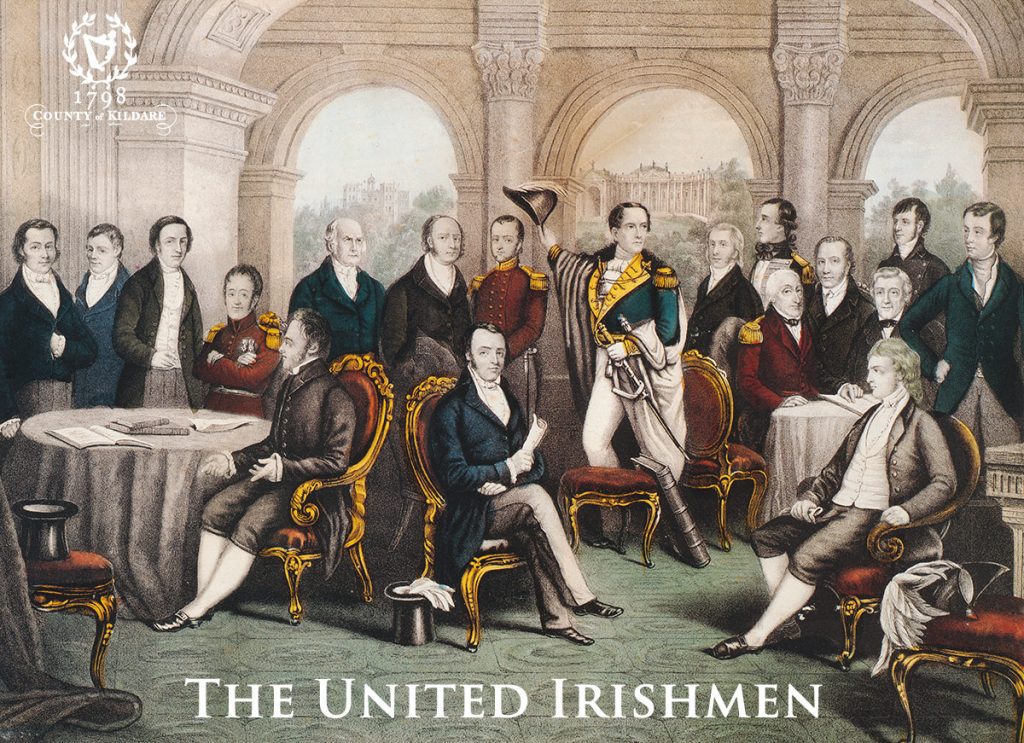Background to Rebellion

The Society of United Irishmen
The Society of United Irishmen was founded in Belfast in October 1791 and later spread to Dublin. The founders were influenced by the ideals of the French Revolution and the American War of Independence. They were bearers of the European Enlightenment and imported ideas from France, England and Scotland. Their aim was for parliamentary reform and Catholic emancipation. They wished for an equal representation of all the people in parliament, with a political system that included those of all religious persuasions.
The early phase of the activities of United Irishmen focused on the printed word. They were particularly successful in disseminating their message and in recruiting members. In Belfast and Dublin they had access to an established printing and publishing network. Pamphlets, newspapers and broadsheets were distributed on a large scale. The works of authors such as John Lock, Tom Paine, Rousseau and Voltaire were handed out in scaled down pamphlet form. The ideas of these men were used to highlight the political and social inequalities in Irish society. Public readings were sometimes held in chapels and public houses. This had a politicising effect, especially at grass roots level.
In 1793 Britain went to war with France. The following year the government suppressed the United Irishmen who were then driven underground. Several of its leaders came together and in 1795 reconstituted it as a secret oath bound society.
By the mid 1790s radicals within the movement like Samuel Neilson and John Burke argued for more revolutionary tactics. They began to develop a military structure and armed for revolution. It had become obvious that the reform which they sought would not be granted voluntarily. The revolutionary mass movement which they sought could only be constructed by linking up with other organisations. Issues such as tithes, taxes, living conditions and class structure could also be addressed by merging with organisations such as the Defenders.
The Defenders and the United Irishmen merged in 1795-6. The merger with the Defenders swelled the numbers in the United Irish movement and spread it out beyond Belfast. The war with France and the prospect of French invasion had changed the political situation in Ireland. Revolution was now a present danger. The threat of revolution came most obviously from the United Irishmen.
The failure of the Bantry Bay expedition did not deter the movement, who continued to plan for rebellion.
The government reacted and introduced an Insurrection Act in 1796 and declared martial law in 1798. Raids for arms increased in frequency, especially in the midlands and the north.
The government increasingly nervous of revolution was kept informed by a network of spies. By now the movement’s headquarters had moved to Dublin. A tip-off by one of the spies led to the arrest of the Leinster Directory at Oliver Bond’s house on the 12th March. Thomas Reynolds, who was an informer against the United Irishmen gave the information that led to the arrests. Reynolds who had joined the United Irishmen at the request of Lord Edward was treasurer of his district and colonel of an insurgent regiment. He later retired to Kilkea Castle which he held on lease from the Duke of Leinster.
Martial Law was declared following the arrests. There were ten provincial delegates and two members of the Supreme Executive arrested. Lord Edward was still at large. The remaining leaders including Lord Edward, the Sheares brothers and John Lawless were betrayed by a government spy and a member of the executive. Lord Edward was wounded in a struggle during his arrest, a member of the arresting party was killed. The Sheares brothers and Neilson were also captured carrying a Proclamation declaring Independence which encouraged people to rise in Rebellion.
